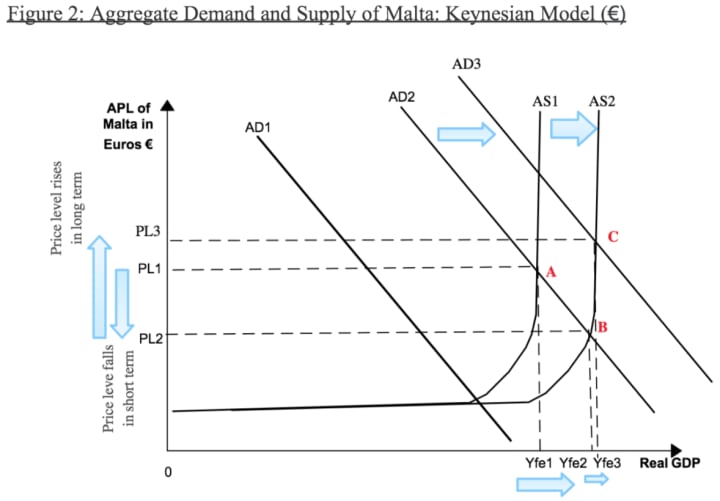

Figure 1 is the PPF of Malta (£). According to the context of the article, six potential areas have been identified to land reclamation in Matla (1). Assuming Malta is already producing at full employment of point A, when the six areas of land are reclaimed, there will be a physical increase in land from 316 square kilometers to more (3); land being a factor of production and natural capital. Increase in the institutional framework and capacity to produce will induce a shift in the PPF to point B, as there is an increase in production possibilities of commercial and industrial (2) and creation of natural habitats (2), all contributing to economic growth. The increase in natural capital of land can be shown in the increase from C to D, the increase in consumption in social housing (5) and tourism to exceed 3 million each year (3) (4) can be reflected by the increase in consumption from E to F.

Figure 2 is the demand and supply of Malta in the lens of the Keynesian model, where this approach focuses on the aggregate demand and its effects on output and inflation; it is always in equilibrium and lack of short and long run. The outward shift of AS1 to AS2 represents the possible increase in the physical factors of production (C.E.L.L.) when land has been reclaimed from the sea, leading to the institutional framework and the capacity to produce from built land to increased. Shift in AS causes APL of Malta to temporarily fall from PL1 to PL2, as there is an increased supply in land and therefore price will decrease as land becomes less scarce; hypothetically transitioning Malta back into the intermediate section. However, AD2 will shift to AD3 as demand for the newly built land, such as the proposal to build social housing (5) and land to build attractions or tourism (4), will increase as prices are lowered. This increases the APL from PL2 to PL3, making the price level of social housing (5) and tourist attractions (4) higher than before. This transitions Malta back into the full employment sector; economic growth has been achieved.
In evaluation, interventionist supply-side policy of land reclamation can be effective in the context of the article, as reclaimed land can be used for commercial and industrial purposes (2), improve the burgeoning tourist sector (4) and build social houses (5). Land reclamation will also directly combat the rising estimated population of 700000 by 2035 (7) through increasing employment and economic development and growth (macroeconomic objectives).
Increase in human capital, such as the influx of an estimated 15000 foreign workers (3), will have no purpose if there is not enough land (3) to provide employment, therefore land reclamation will solve this problem. This will benefit the Maltese government through the increased tax revenue from tourism (4) (injection of money into the economy) and other economic activity that occurs on the reclaimed land, where this revenue can be spent on the country through fiscal policies, and subsequently benefitting the consumers through merit goods such as education.
Producers will also benefit from increased production possibilities when more land is built. As economic opportunities such as tourism will increase and therefore firms can sell their goods or services to a larger market; leading to increase in profit. Increase in supply and revenue can also generate employment, solving a macroeconomic objective.
Consumers can also benefit from land reclamation as they can enjoy more facilities, such as social housing (5), which increases their standard of living; solving another macroeconomic objective.
However, there is strong opposition from environmentalists (6), as land reclamation will negatively impact the environment and create unsustainable growth, a tragedy of the commons, and therefore a form of market failure as there are negative externalities to produce. But some may argue that the land can be used for creation of natural habitats (2), which can mitigate the harm caused onto the environment.
Moreover, by using the government budget to reclaim land, the opportunity cost of other merit goods such as education rises. As reclamation of land is extremely expensive, therefore the Malta government needs to prioritise their use of tax revenue.
In conclusion, land reclamation will have a time lag for employment and economic growth to increase, therefore it is a good solution in the long run but market-based policies may be more effective for immediate effect in the short run; however a less direct and guaranteed way to increase factors of production.
About the Creator
Rowaboat
I see you reading into my Bio... ;) Nothing much to read here tbh, just a girl who loves talking about dietetics, relationships, motivation, morality, family, Korean and moreeee~ If I said anything you like, we are automatically friends :)






Comments
There are no comments for this story
Be the first to respond and start the conversation.